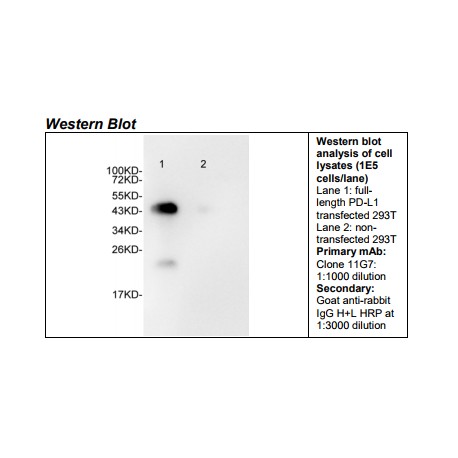No products
Product successfully added to your shopping cart
There are 0 items in your cart. There is 1 item in your cart.
RABBIT MONOCLONAL
- Protein Control Ligand
- Pathway Inhibitors
- Enzyme Inhibitors
- Kinase Inhibitors
- Protease
- Synthase
- p18
- p38
- p53
- p70
- p90
- Peptidase
- Carboxyl and Decarboxylases
- Ceramide Turnover Enzymes
- Chromatin Modifying Enzymes
- Cyclic Nucleotide Turnover Enzymes
- Glycerophospholipid Turnover Enzymes
- Hydroxylases
- Ubiquitin-Activating Enzyme
- Adenosine Deaminase
- Clathrin
- Nuclease
- p68
- ACE
- COX
- DHFR
- Neprilysin
- NF-κB
- RAF
- RAS
- Reductase
- ROR
- Topoisomerase
- Transferase
- Protein Inhibitors
- Transporter Inhibitors
- Cell Inhibition
- Synthase
- Receptor Tyrosine Phosphatases (RTP)
- AChE
- Peptidase
- Autophagy
- Toll-Like Receptor (TLR)
- Enzyme Inhibitors
- Function Modulators
- Activators
- G Protein-Coupled Receptor Ligands
- 5HT Receptors
- Adrenoceptor
- Angiotensin Receptor
- Cannabinoid Receptors
- CCK Receptors
- DA Receptors
- EAA Receptors
- Ghrelin Receptors
- GABA Receptors
- Histamine Receptors
- Leukotriene Receptors
- Metabotropic Glutamate Receptors
- Motilin Receptors
- Muscarinic Receptor
- Neuropeptide Receptors
- Opioid Receptors
- Orexin Receptors
- Orphan Receptors
- Prostanoid Receptors
- Proteinase-Activated Receptors
- Purinergic Receptors
- Ryanodine receptor
- Sigma Receptors
- Thrombin Receptor
- Vaniloid Receptor
- VIP and PACAP Receptors
- Neurotensin Receptors
- Urotensin Receptor
- Imidazoline receptor
- SMO Receptors
- Apelin Receptor
- β-arrestin/β2-adaptin
- KDM4
- Glucocorticoid Receptor
- Laminin Receptor
- AHR
- Amylin Receptor
- Bombesin Receptor
- Bradykinin Receptor
- CFTR
- CGRP Receptor
- CRFR
- Endothelin Receptor
- Ephrin Receptor
- Farnesoid X receptor (FXR)
- Glucagon Receptor
- Nuclear Receptor Ligands
- GDNF Receptors
- TNF Receptors
- Transcription Factors
- Chemokines
- Cytokine Receptors
- Biomarkers and Buffer Solutions
- Molecular Probes
- Stem Cell Research
- Alzheimer's Disease
- Apoptosis
- Cancer Research
- Epigenetics
- Metabolites
- PET/SPECT Imaging Precursors
- Customized Screening Library
- Ultra Pure Pharmacological Standard
- Tissue Microarray (TMA)
- Proteins and Antibodies
- Primary Cells
- ELISA KIT
- Natural Products
- Lab Equipments
- Humanized Mice for PDX Platform
- Rare Chemicals
- Custom Synthesis
- Antibacterial
- Antifungal
- Antioxidant
- Antiviral
- Molecular Glues
- PROTAC Linker
- SARS-CoV
Rabbit anti-human PD-L1 Monoclonal Antibody Clone 11G7
AP35774M11G7
Molarity Calculation Cart®
HOW TO ORDER
More info
DESCRIPTION | |
Species Reactivity | Human PD-L1 |
Immunogen | recombinant human PD-L1 extracellular domain |
Purity | > 95% determined by SDS-PAGE |
Formulation | 1x PBS, pH7.4 |
Size | 100µl (concentration 1mg/mL) |
APPLICATION | |
ELISA | |
IHC | 1:1000 |
Western Blot | 1:1000 - 1:3000 |
Research Use or Further Manufacturing Only. | |
PREPARATION AND STORAGE | |
Preparation | Monoclonal antibody is produced by immunizing rabbit with recombinant human PD-L1 extracellular domain and purified using protein A resin. |
Storage | This antibody is shipped at 4 oC. This product is stable for 12 months from date of receipt when stored at -20oC to -70oC. Avoid freeze/thaw cycles |
BACKGROUND
Programmed death-ligand 1 (PD-L1) is a 40kDa type 1 transmembrane protein that suppresses immune system. PD-L1 is expressed in hematopoietic and nonhematopoietic cells including T cells and B cells and various types of tumor cells. PD-L1 binds to its receptor Programmed death 1 (PD1). During infection or inflammation, PD1- PD-L1 interaction is important for preventing autoimmunity. In tumor microenvironments, PD1-PD-L1 interaction provides an immune escape for tumor cells through cytotoxic T-cell inactivation. Expression of this gene in tumor cells is considered to be prognostic in many types of human cancers. In recent years, PDL1 has become an important biomarker and immunotherapy target for many types of malignancies |



